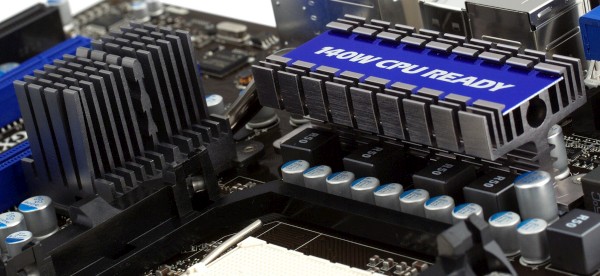In due time we reviewed the original MSI 785GM-E65 motherboard that was as feature-rich as any full-size solution could be, including overclocking and other enthusiast functionality. The demand for that solution, expensive in terms of microATX motherboards, was probably good, so when AMD rolled out its 890GX chipset, even more interesting for demanding users, MSI didn't hesitate to make a newer product. In fact, there's nothing surprising in the popularity of feature-rich microATX motherboards. While overclockers and enthusiasts can wish for higher-end products, solutions like this offer the most features for home PCs and theaters, as well as office machines, all in a compact form factor. Speaking of the latter, there are many compact enclosures available for sale, both desktop and tower. Strictly speaking, if you disregard the hype about nettops, there's not much sense in paying more for Mini-ITX solutions that, in 90% of cases, are definitely slower. (Blame it on advertising and lopsided positioning -- Mini-ITX machines naturally fit as embedded and industrial solutions. Sometimes there are just no alternatives.)
Anyway, let's see whether the today's motherboard, MSI 890GXM-G65, can compete with full-size products in terms of functionality.
Design
First of all, the two graphics slots supporting CrossFire allow you to install graphics cards of any standard size. You won't lose much other functionality at that, given you're not going to install any other PCI or PCIe cards. Note that in that case the slots will work in the x8+x8 mode. If you look at the motherboard from the gaming PC angle, you may think that two fan connectors is not enough. However, there won't be much space for more coolers in a compact enclosure, so you will probably have to choose graphics cards with regular coolers that drive hot air outside. They will improve the general airflow inside the enclosure.
Speaking of minor drawbacks, it would be more convenient if the power connector was located closer to the edge.
The rear panel is very similar to that of the aforementioned MSI 785GM-E65. Only FireWire is replaced by a couple of blue USB 3.0 ports.
With a heatsink like that, the chipset won't overheat for sure. Even in a small enclosure. The CPU cooler, facing either way, will help, too. It's probably too early to draw conclusions on the heat emission of the 890GX chipset. We tested the motherboard with a Zalman CNPS9700 CPU cooler, and even after long gaming tests the chipset had the ambient temperature. But judging by objective information, it should emit more heat than AMD 785G, because the graphics core clock rate is now 200 MHz higher (700 MHz). Compared with AMD 790GX, the peak heat emission should be a bit lower thanks to the process technology. The standby heat emission should definitely be lower, because the new chipset, as well as AMD 785G, has more advanced dynamic phase controls. We'll provide more details in the power consumption section of the review.
The CPU VRM has 5 phases, 3 FETs per each. There are 10 x 820µF and 4 x 270micro;F solid capacitors. Processors of up to 140W TDP are supported.
The motherboard supports Active Phase Switching that dynamically disables unused phases. The feature can be enabled/disabled in BIOS. Besides, there are LEDs that visualize the whole process.
MSI 890GXM-G65 features a 128MB of DDR3-1600 memory (Hynix H5TQ1G63BFR-12C) used as video buffer by the integrated graphics core. The chip works at 1333 MHz in the normal mode.
The bundle includes a SATA cable with metallic latches, a PATA cable, and a power adapter. The software CD offers an automatic BIOS/drivers update tool and Norton Internet Security.
Write a comment below. No registration needed!


